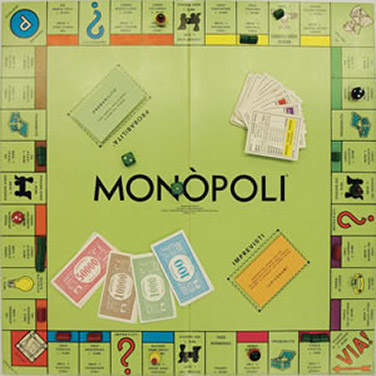Monopoly

In Monopoly, two to eight players move around the forty spaces on the board by rolling two dice and compete to accumulate as much wealth as possible by buying, selling, exchanging and renting out properties and real estate. Each player receives the same amount of capital at the outset to buy vacant properties and build houses or hotels on entire streets. If the other players land on a property, they have to pay rent to the player who owns the real estate. Cards are drawn to add additional elements of chance to the game.
History
At the beginning of the twentieth century, the American Elizabeth Magie created The Landlord's Game, designed to render the ideas of economist Henry George accessible to a broader public and especially highlight the dangers of property monopolies. In around 1935, Monopoly was launched on the American market in its present form, from where it spread around the world, although it was rejected just as much as accepted. Today, there are special editions for numerous countries with real or fictitious city and street names.
Mathematics
For a sensible mathematical analysis of Monopoly that offers players an aid in their decision-making, the cost of buying a property needs to be compared to the expected increase in earnings. As Monopoly involves an element of chance, prognoses for the purchases can only be based on probabilities (of a visit to the space in question) and expected values (of income). The Monopoly circuit can be regarded as a regular Markov chain, where a transition corresponds precisely to the effects of rolling the dice. The probabilities of the individual spaces can be worked out by solving a system of linear equations. As it turns out, in the Swiss edition players land more frequently on Bundesplatz in Bern than Place St-François in Lausanne.